You
can also view the message online

Châtenay-Malabry (FR - 92290), May 30, 2022
EFITA newsletter / 1041 - European Federation for Information Technology in Agriculture, Food and the Environment
The informatique-agricole.org site offers you the possibility of subscribing the RSS feeds of its two newsletters
See RSS feeds to implement to ensure that you continue to receive this newsletter
To unsubscribe this newsletter, please contact me directely: guy.waksman(a)laposte.net if this link Unsubscribe does not work.

To correspond with me (GW), please use this address: guy.waksman(a)laposte.net
To subscribe the efita newsletter (please ask your friends and colleagues to test this link)
Efita Newsletters subscription
Avant l’informatique : Vintage tractors
Weekly newsletters about ICT in Agriculture in English and French
Both newsletters have around 14000 subscribers.
>>> Last weekly EFITA Newsletters in English (created in 1999) Efita Newsletters
>>> Last weekly AFIA Newsletters in French (created more than 20 years ago in 1997) Afia Newsletters
>>> Statistics for the last efita newsletter
>>> Last issue of the afia newsletter
>>> Last available satistics for the afia newsletter
The Auvergne region (Central France) as seen through old postal cards (see next images)
Voir "la moisson à la main et le battage au fléau"
Harvesting buckwheat entirely by hand
| 01 - 19/05/2022 | 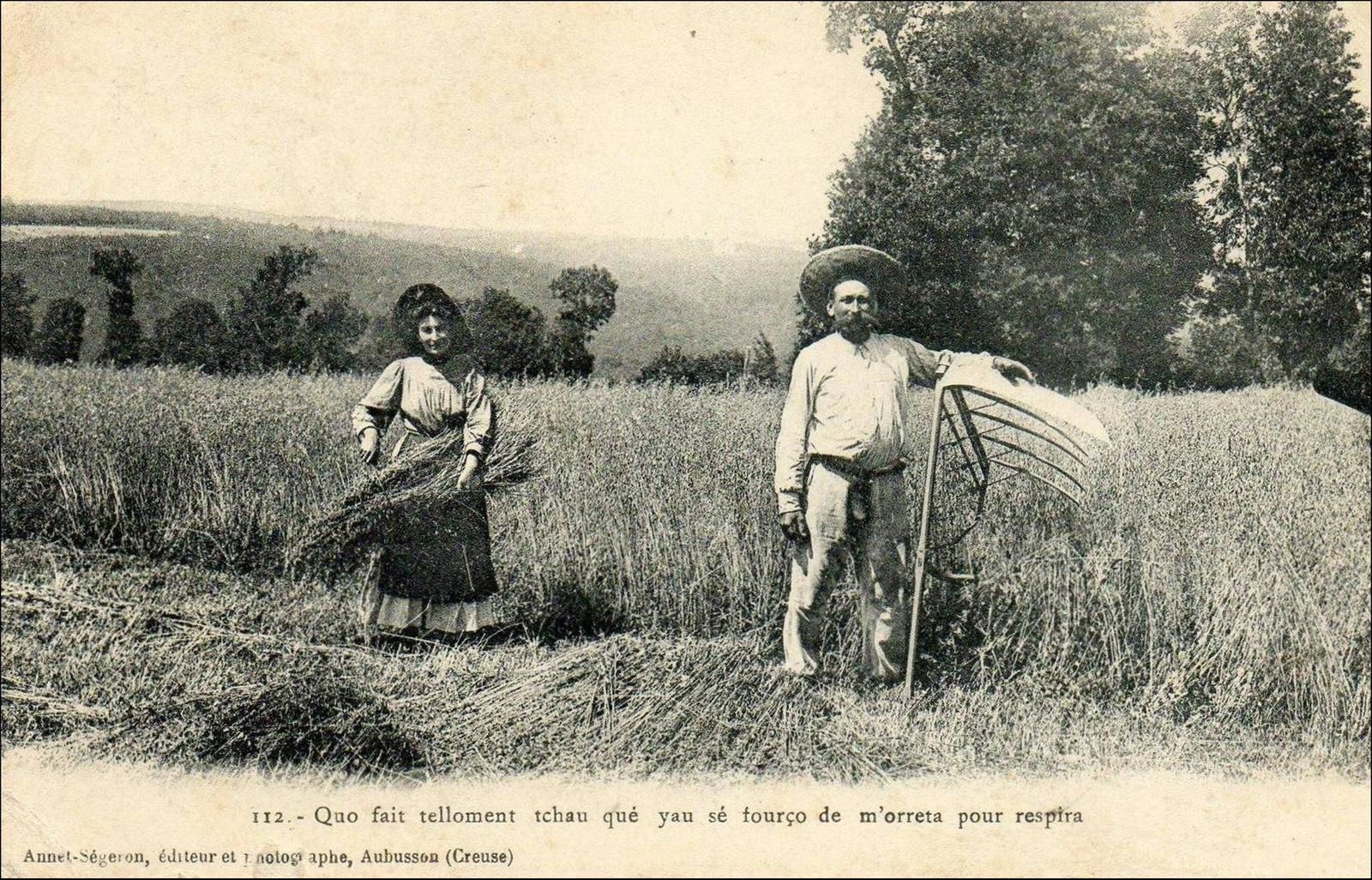 |
7th Future of Biogas Europe Summit
23 – 24 November 2022 - Amsterdam, The Netherlands
With ever increasing demand for GHG emissions reduction, Biogas has never been in higher demand. Following updated EU targets, it is clear the industry must grow, which brings both challenges, and great opportunity. The conference will discuss the key legislative changes regarding biogas, a broad review of the biogas industry, as well as key developments that the industry must adapt to grow, and meet growing demand. Biogas’s role in fighting climate change, and importance in heavy industry will also be highlighted. Finally, Biogas feedstock requirements, challenges and opportunities will be discussed, as well as an assessment of alternative biogas uses, with an outlook to exploring new markets.
Active Communications International, Inc (ACI) is delighted to announce the Future of Biogas Europe 2022 Summit, taking place in Amsterdam, The Netherlands, on the 23rd and 24th of November 2022. The two day event will bring together senior executives and experts from the full value chain and provide a forum for all parties active in the field of anaerobic digestion of organic matter and renewable energy production in the form of biogas. The conference will provide our delegates with interactive sessions, panel discussions, conference presentations and networking opportunities to discuss the challenges and latest trends in the bioenergy industry.
See wplgroup.com
The reapers
| 02 - 26/05/2022 |  |
How did we see the future yesterday??
See the incredible collection developed by Alain Fraval
Where does the plastic in our oceans come from?
To tackle plastic pollution in the ocean, we need to know where these plastics are coming from.
An estimated 80% of ocean-polluting plastic enters via rivers and coastlines. The other 20% comes from marine sources such as fishing nets, ropes, and fleets. Previous studies suggested that a very small number of rivers were responsible for the vast majority of ocean plastics: 60% to 90% of plastics came from only 10 rivers.
In this article we discuss more recent research that suggests many smaller rivers play a bigger role than we thought. Instead of 10 rivers, it takes 1,600 of the biggest emitting rivers to account for 80% of plastic inputs to the ocean.
Since the number of contributing rivers is likely much higher than previously thought, we will need global efforts to improve waste management and plastic collection rather than targeting only a few of the largest rivers.
| See
ourworldindata.org |
What is the lifetime risk of depression?
Depression is one of the most common health conditions globally. It’s estimated that between two to six percent of people in the world have experienced depression in the past year.
But what are the chances that people have depression at any time in their lives?
In this article we show recent estimates of the lifetime risk of depression. In the United States, it's estimated that one-in-three women and one-in-five men have had depression at some point in their lives by the age of 65.
We explain why measuring the lifetime risk of depression is challenging, and how researchers are able to make these estimates.
FutureFarming.com
> Australian technology saves on water and delivers higher yields
Australian company Goanna Ag will make its GoField water management solution commercially available in the U.S. from 1 June. Goanna Ag is currently trialling the system in the U.S. in collaboration with the USDA Agricultural Research Service.
> Precision drip irrigation gives Brazilian coffee extra flavour
> Experimenting with drip irrigation in seed potatoes on wide beds
> SupPlant raises US $ 27 million for its irrigation platform
> Preserving the most popular beverage with precision irrigation
> Viridix launches AI-based autonomous irrigation solution
> Wearable sensor for plant leaves warns of heat stress in crops
> Sencrop raises $ 18 million to accelerate agro-weather solutions
> Aliaxis and CropX partner in data-driven precision irrigation
> Field Trials Podcast – Building more accurate analysis tools
In part 1 of the latest episode of Future Farming’s Field Trials podcast features Mike Winn, DroneDeploy's chief executive officer and co-founder, discussing where he and his colleagues have made strides in drone-based agronomy, as well as lessons revealed over DroneDeploy’s nine plus years in business.
> Expert opinion: Expensive luxury cabs are slowly becoming obsolete
A veritable flood of autonomous agricultural vehicles is now arriving as the multi-national tractor and machinery manufacturers begin to enter this expanding market. Do these moves spell the beginning of the end for the luxury cab?
> Field robots: Australian harvesting robot picks apples in seven seconds
An Australian research team of Monash University has developed an autonomous harvesting robot capable of identifying, picking and depositing apples in as little as seven seconds at full capacity.
> Autonomous equipment: Lemken and Krone show autonomous field robot
A tool that can work autonomously and 24 hours a day. That is the goal of the Combined Power project set up by the German implement manufacturers Lemken and Krone. Two prototypes were on display this week in Hopsten, Germany.
> Drones: Vietnamese rice farmers adopt drones to decrease inputs
Vietnamese rice growers are adopting drones to grow more rice using fewer resources. According to drone manufacturer XAG, drones are becoming increasingly popular, especially amongst young farmers who are keen to earn a decent salary as a drone pilot.
> Autonomy: John Deere acquires autonomous technology start-up
John Deere has acquired Light, a California-based company that develops depth sensing and camera perception for autonomous vehicles. John Deere will integrate the Light platform, Clarity, into its autonomous tractors.
See futurefarming.com
Flail threshing floor (1)
| 03 - 19/05/2022 | 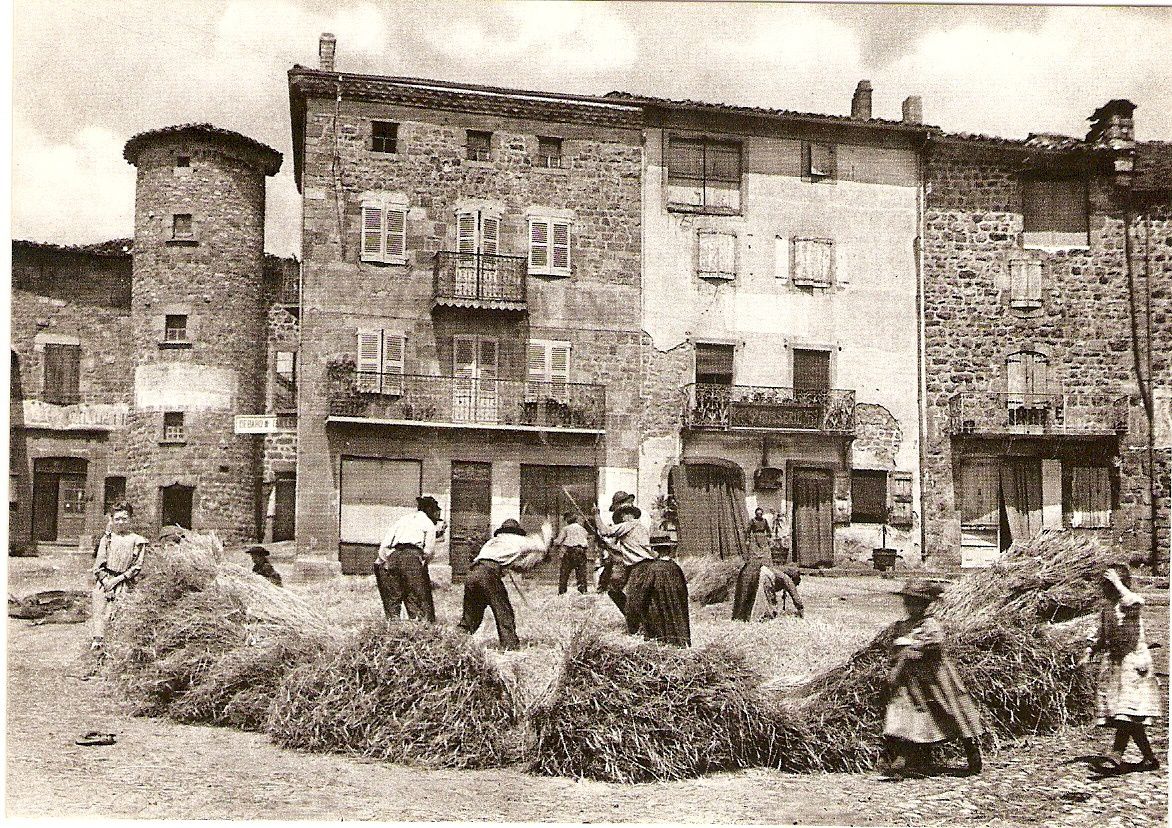 |
China Releases First Technology Roadmap for Intelligent Agricultural Machinery
Roadmap includes formation of commercial unmanned farms operated by advanced machines by the end of the 14th Five-Year Plan period.
See precisionag.com
Bio Detection K9 Develops Cutting-Edge Detection for Grape Virus Diseases
First-of-its-kind method trains dogs to detect and protect vineyards against Leafroll 3 and Red Blotch Virus.
See precisionag.com
Solis Agrosciences Delivers Specialized Research Services for AgriFoodTech Innovators
New startup Solis Agrosciences enters the market to make plant science innovation faster and simpler
See precisionag.com
Flail threshing floor (2)
| 04 - 26/05/2022 |  |
High Tech Tools Help Bullseye Farms Hit the Mark in Irrigation
Learn how Bullseye Farms in California works with Ceres Imaging to help it optimize its irrigation strategies.
See precisionag.com
CropTrak, SISC Release Stewardship Calculator 2.0 to Support Specialty Crop Supply Chain Collaboration for Regenerative Agriculture
This on-farm calculator enables growers, tier one suppliers, and brands to collaborate on sustainability across specialty crop supply chains.
See precisionag.com
India was second only to US in agrifoodtech deal activity last year, AFN, by Jack Ellis
Indian agrifoodtech companies raised a total of $4 billion in venture funding last year, behind the US on $21 billion and China on $7.3 billion,
However, India placed second in terms of deal activity, with 257 funding rounds compared to the US’s 1,062 deals; the UK came third with 188 deals (raising $1.3 billion in total) and China fourth with 123 deals.
Meal delivery app Swiggy scored the top two rounds, including its $800 million Series J raise in April co-led by Goldman Sachs with Qatar Investment Authority and GIC among the other investors to participate.
Archrival Zomato raised $250 million in February, marking the year’s third-largest deal.
We asked Mark Kahn (MK), managing partner at AgFunder’s India data partner Omnivore, for some added insight on the market.
.../...
See agfundernews.com
Flail threshing floor (3)
| 05 - 26/05/2022 | 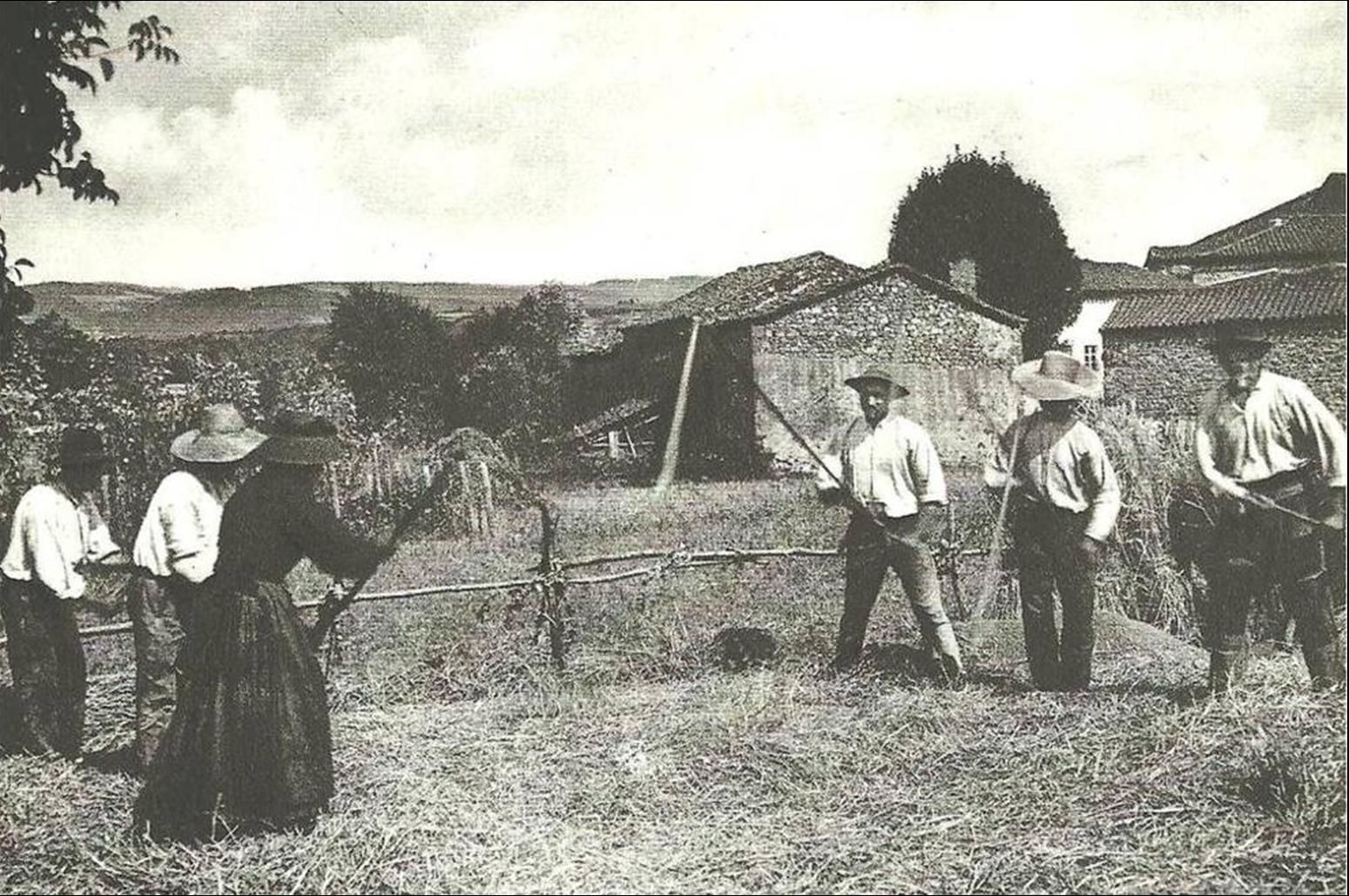 |
Instant grocery delivery’s future looks murky as Getir, Gorillas & Zapp announce cuts, AFN, by Jennifer Marston & Louisa Burwood-Taylor
“Instant” grocery delivery is the latest sector to suffer from the current tech slowdown, with three European startups this week announcing layoffs and other cuts. All of these companies rose to prominence during (and arguably because of) the Covid-19 pandemic, promising grocery and household items in minutes to home-bound consumers in search of convenience.
…/…
See agfundernews.com
To have or not to have paid days off
| 01 - 26/05/2022 | 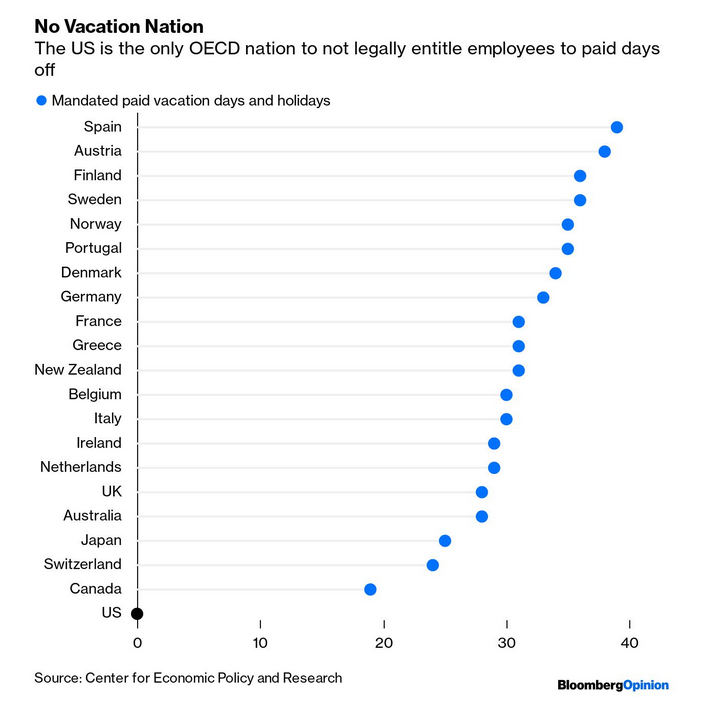 |
Cheap Europe
| 02 - 26/05/2022 | 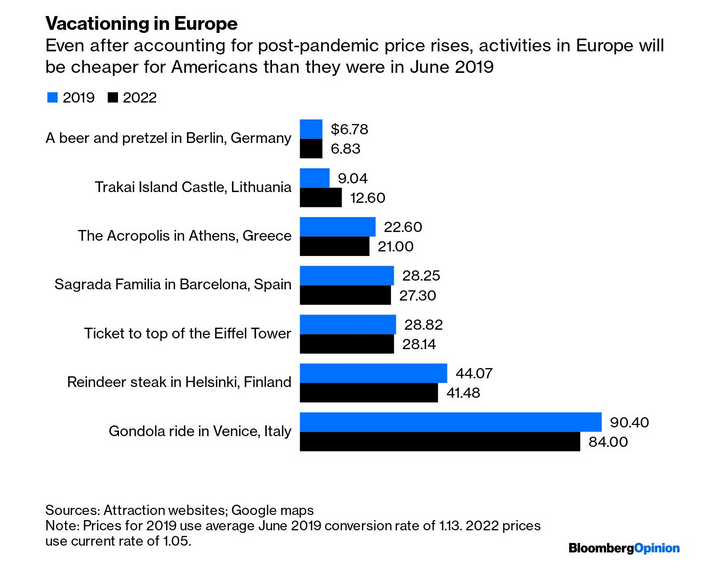 |
Black and Decker introduced the first battery-powered cordless drill in 1961
It cost $100, but with blue-collar compensation averaging $2.60 an hour, it took over 38 hours to earn enough money to buy one.
Today the time price of a cordless drill is just 54 minutes.
| See humanprogress.org | 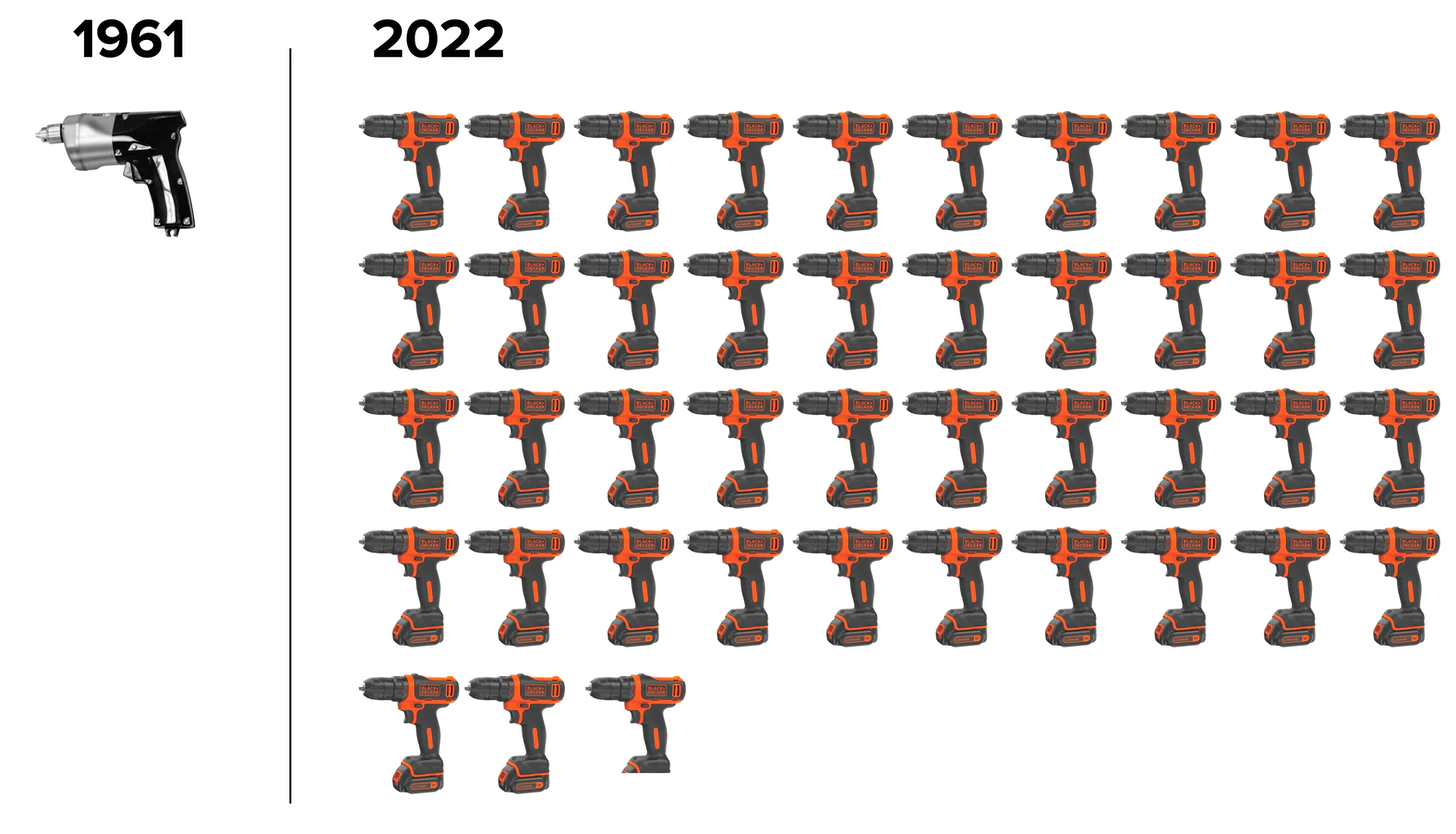 |
Stable raises $60m to help farmers manage food price volatility, AFN, by Jennifer Marston
Stable has raised a $60 million Series B round to help farmers and food companies better hedge their exposure to commodity price volatility in the face of war and global food security concerns.
Acrew led the round with participation from Greycroft, Notion Capital, Syngenta and Continental Grain Company.
How it works:
Stable says it has made hedging — that is, making investments that offset potential business losses — much simpler and less overwhelming for farmers and food businesses with its data science-driven platform.
- Stable founder and CEO Rich Counsell tells AFN the platform has “nearly 8,000 different commodities” on it, allowing for businesses to be “very precise” about matching their specific risks.
- Users can customize their contract and price protection within the platform to effectively insure against price volatility.
- Stable says it only works with businesses “facing real risk, rather than those looking to profit from speculation.”
- Counsell emphasizes that Stable doesn’t take on any of the risk itself.
- Stable’s roster of clients rangers from multinational food and beverage companies to family farms around North America.
.../...
See agfundernews.com
Cheap Euro
| 03 - 26/05/2022 | 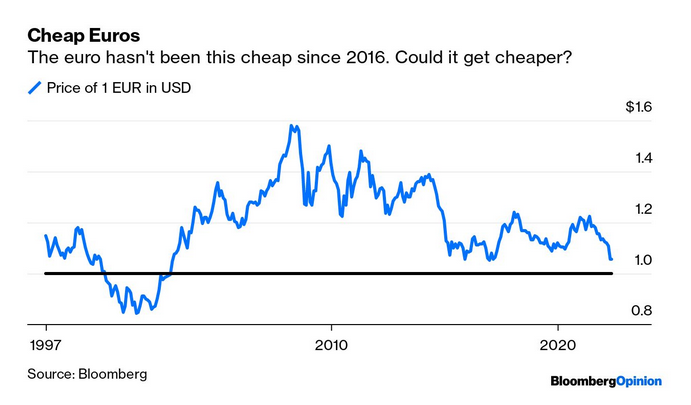 |
Crises and investors
| 04 - 26/05/2022 | 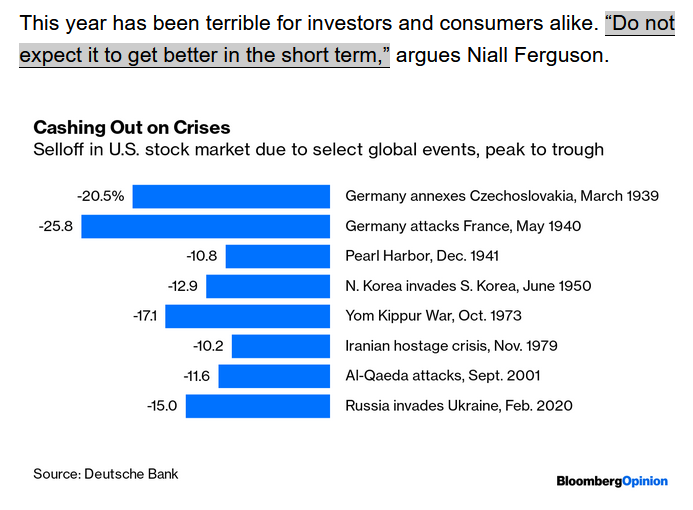 |
Ag Carbon Market Map: Meet the 75 companies helping to harness the benefits of regen ag, AFN, by guest contributor: Matthew Guinness
The trade in voluntary carbon credits exceeded $1 billion in 2021, a 3x increase year-on-year and a significant milestone in demonstrating that it’s a functional market. With increasing recognition of the role of nature-based solutions in reaching ‘net zero,’ the voluntary carbon market has established itself as an important part of climate change mitigation and is expected to continue to expand rapidly in the next five to 10 years; McKinsey estimates that the market could be worth as much as $50 billion by 2030.
However, so far, agriculture’s contribution has not grown as fast as the wider market and remains a small fraction of the total despite its vast potential as a carbon sink.
Harnessing the promise of agri-carbon markets and the scale of agriculture has its own particular challenges; the early history of agri-carbon markets has been characterized by unmet promises and false dawns. But these obstacles are surmountable with smart program design and innovative tech solutions, offering the industry a clear path to success and scale.
Foremost among the challenges that need to be tackled is reliable and cost-effective monitoring, reporting, and verification (MRV). This is hard to deliver – and even harder to scale. An EU report on carbon farming summarized the MRV challenge thus: “It is not feasible or cost-efficient to measure data on-site in the restoration area in real time for all indicators continuously, so schemes would have to rely partially on modelled data, spot checks, and reference data.”
…/…
| See agfundernews.com | 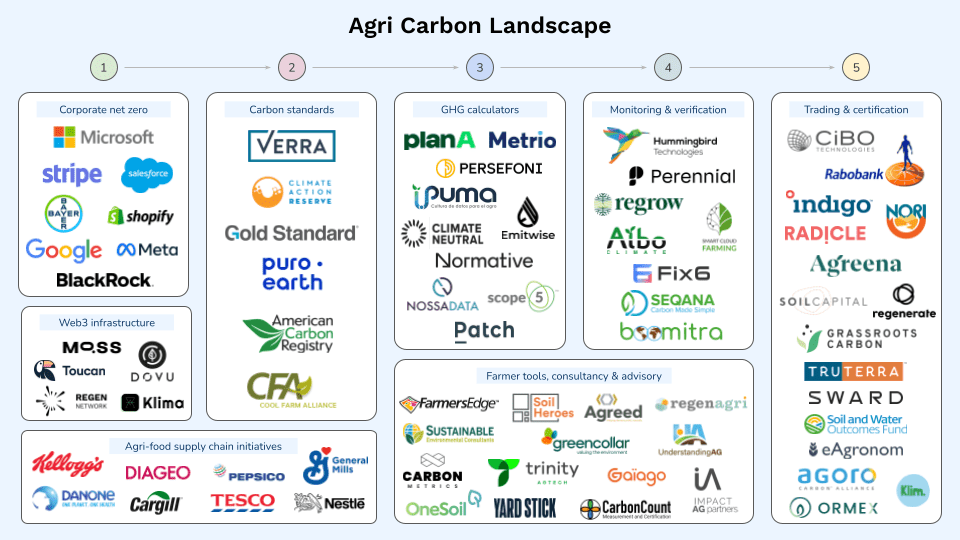 |
Flail threshing floor (4)
| 06 - 26/05/2022 | 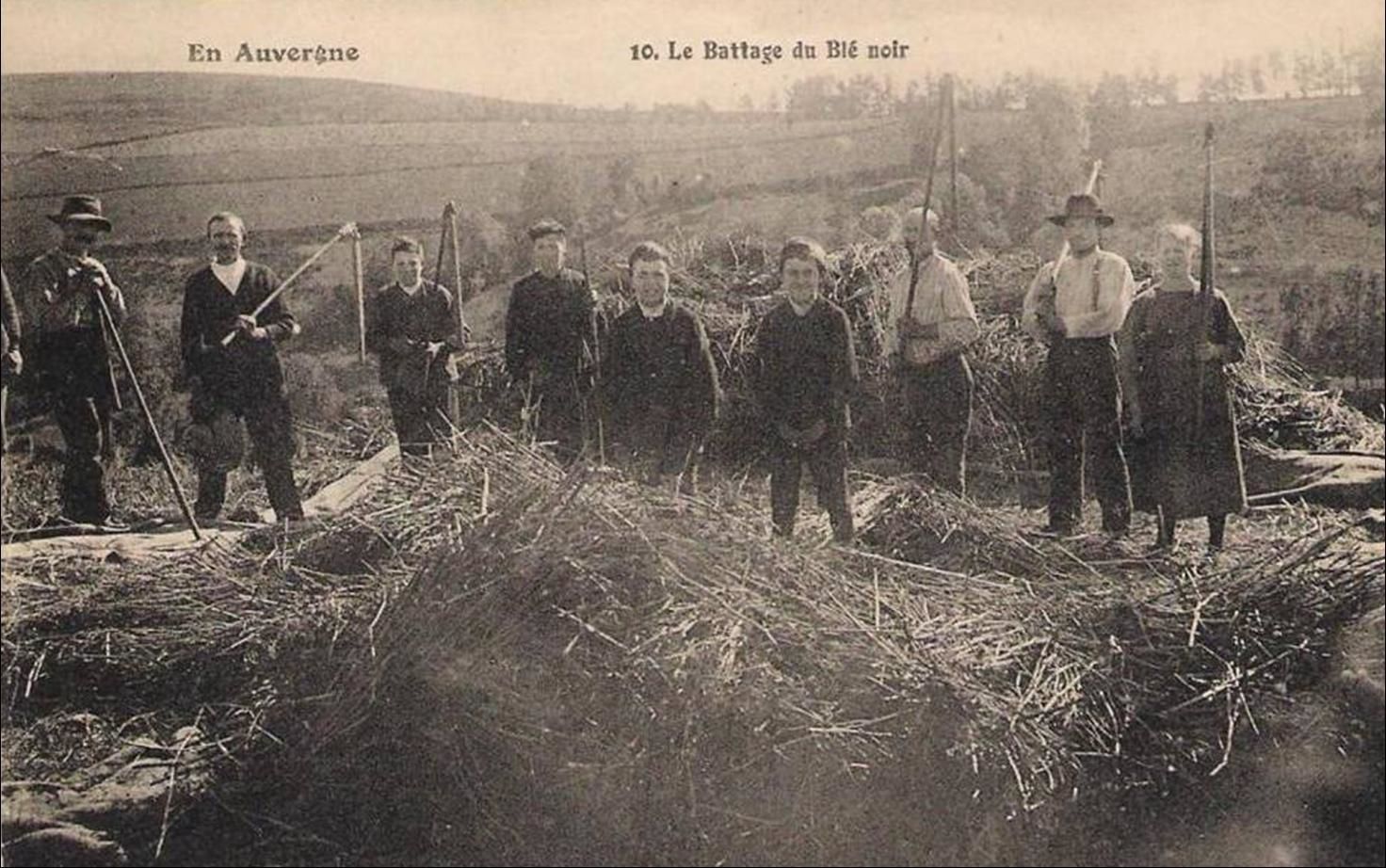 |
Winnowing
| 07 - 26/05/2022 | 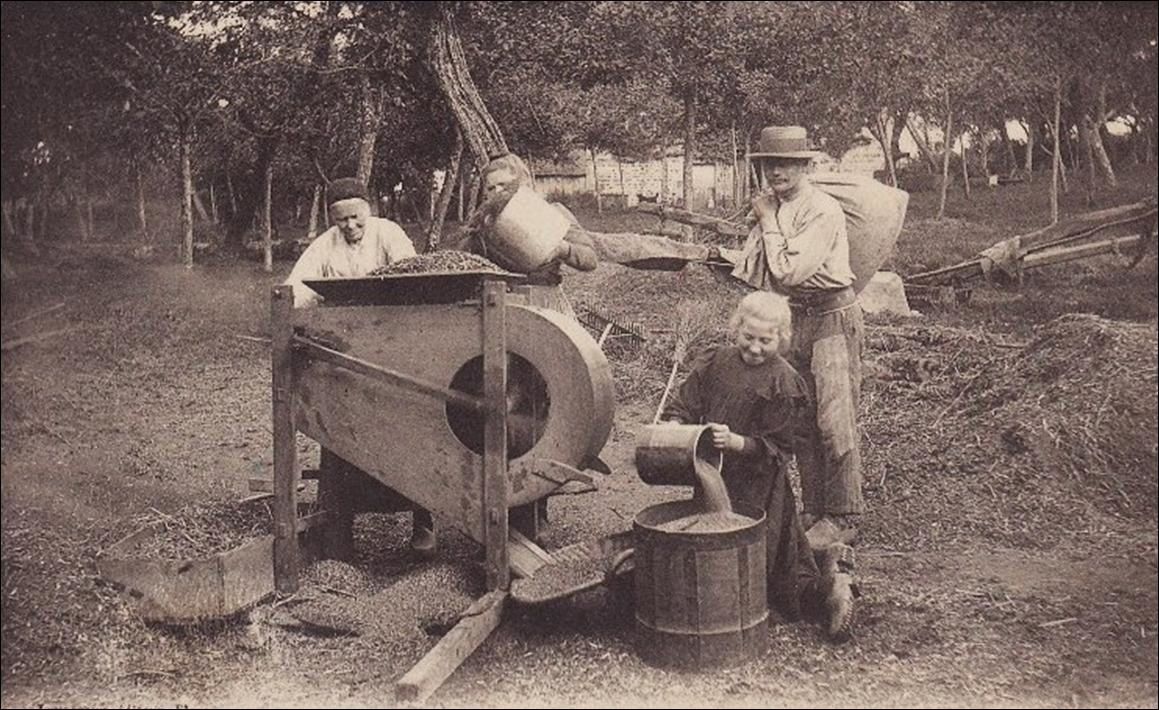 |
With food prices climbing, the UN is warning of crippling global shortages, NPR (source: AFN)
Fears of a global food crisis are growing due to the shock of the war in Ukraine, climate change and rising inflation.
Kristalina Georgieva, the International Monetary Fund managing director, told the World Economic Forum in Davos, Switzerland on Monday that "the anxiety about access to food at a reasonable price globally is hitting the roof" as food prices continue "to go up up up".
Last week, United Nations Secretary-General António Guterres warned of "the specter of a global food shortage in the coming months" without urgent international action.
The U.N. estimates that in the past year, global food prices have risen by almost one third, fertilizer by more than half and oil prices by almost two thirds.
According to U.N. figures, the number of severely food-insecure people has doubled in the past two years, from 135 million pre-pandemic to 276 million today. Now, more than half a million people are experiencing famine conditions, according to the U.N., an increase of more than 500% since 2016.
.../...
See npr.org
Recession probability / Récession probable ou non
| 05 - 26/05/2022 | 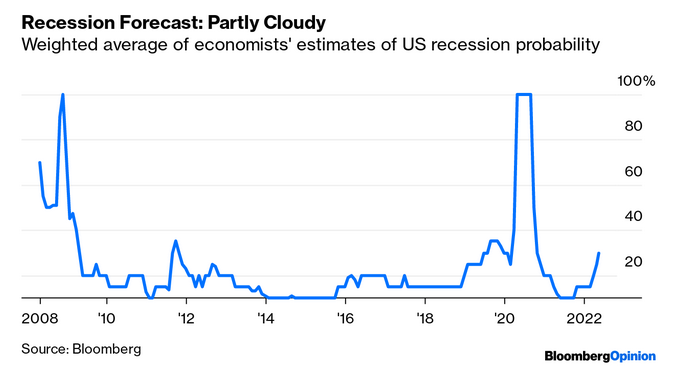 |
Nothing new in Wall Street / Rien de neuf à Wall Street
| 06 - 26/05/2022 |  |
| 06 - 26/05/2022 |  |
Regrow raises $38m Series B funding to expand reach of its regen ag tech platform, AFN, by Jack Ellis
Regrow, a US-based startup using technology to enable regenerative agriculture practices, has raised $38 million in funding.
>>> Why it matters:
This latest capital injection follows Regrow’s Series A round in August 2021, which saw it land $17 million in funding.
Over the next year, Regrow will use the Series B funds to expand its presence in “key food-producing regions across the globe” while growing the number of farmers in its ecosystem, founder and CEO Anastasia Volkova tells AFN.
It will also work with its partners to establish incentive programs which encourage greater adoption of regenerative ag practices, while opening up “to even more producers and agricultural systems across rangelands, dairy, perennial crops, and more,” she says.
.../...
See agfundernews.comv
Auvergne region in 1900
| 08 - 19/05/2022 | /image%2F0757533%2F20210417%2Fob_41e347_image2.jpg) |
|
Gazette
de vitisphere.com, |
More Fuel for the Food/Feed Debate
New FAO Study indicates that livestock primarily consume foods not fit for human consumption and meat production requires less cereals than generally reported
In 2050, the world will count 9.6 billion people, 70% living in cities with an average income almost twice as high as today. As a result, global demand for animal products will continue to grow and play a critical role in global food security and nutrition. But livestock use a large share of agricultural land and are often considered a resource drain. Particularly criticized is the low efficiency of livestock to convert feed into human edible protein and the competition for the use of cereals as livestock feed or for direct human food.
A new study by FAO and published in Global Food Security found that livestock rely primarily on forages, crop residues and by-products that are not edible to humans and that certain production systems contribute directly to global food security, as they produce more highly valuable nutrients for humans, such as proteins, than they consume.
| …/… See fao.org Contact: Anne MOTTET Livestock Policy Officer FAO HQ Viale delle Terme di Caracalla 00153 Rome, Italy E-mail: anne.mottet(a)fao.org |
 |
Les Cornards, fête locale à Sauxillanges (1) / Horn bearers, a local festival in Sauxillanges
| 09 - 26/05/2022 |  |
« Bio schadet dem Klima und fördert den Landverbrauch » (Neue Zürcher Zeitung)
Der Ukraine-Krieg verschärft die globale Ernährungssituation zu einer Hungerkrise. Erik Fyrwald, Chef des Agrochemiekonzerns Syngenta, fordert eine Neuausrichtung der Landwirtschaft. Bio hat darin keinen Platz, Nachhaltigkeit schon.
Sehen magazin.nzz.ch
American concerns
| 07 - 26/05/2022 | 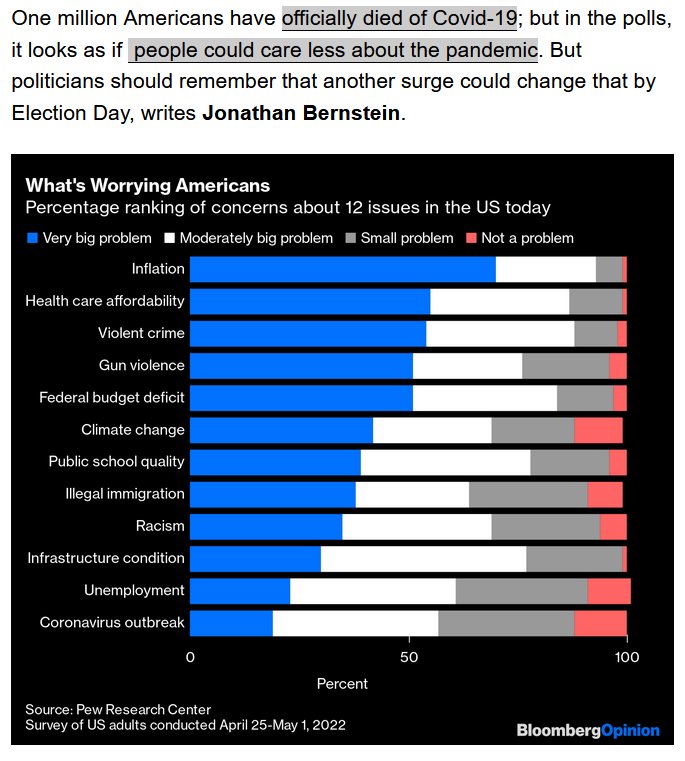 |
The fall of Walmart and Target
| 08 - 26/05/2022 | 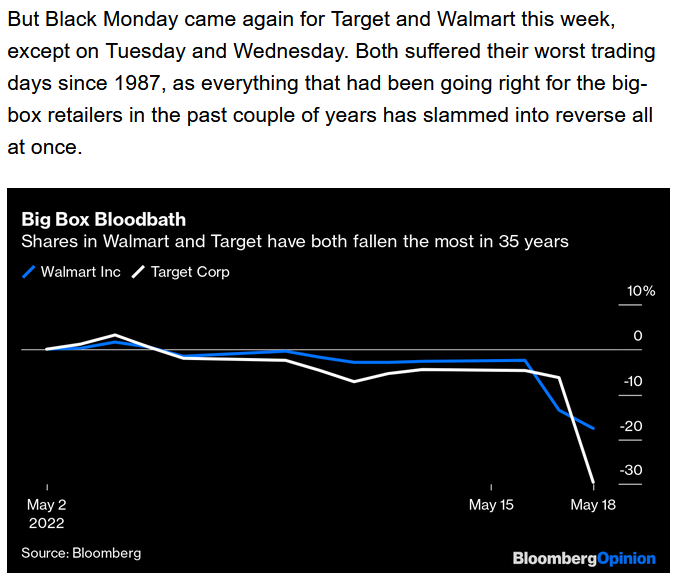 |
Stop organic farming to help future food crisis, says Syngenta boss
See swissinfo.ch
The expansion of global trade has been a major force for progress – increasing prosperity and reducing poverty
Unfortunately, the last decade or so has seen a fall in global trade, and the last few years of economic disruptions have shaken many people's faith in economic interconnectedness.
We should remember that giving up on globalization would mean sacrificing much of what the rest of the world has to offer – such as an affordable and safe baby formula at a time when we can't seem to produce one at home.
| See data.worldbank.org |  |
Stocks vs Bonds, or Gold / Actions, obligations ou l’or ?
| 09 - 26/05/2022 |  |
Height countries and four major crops / Huit pays et quatre cultures principales
| 10 - 26/05/2022 | 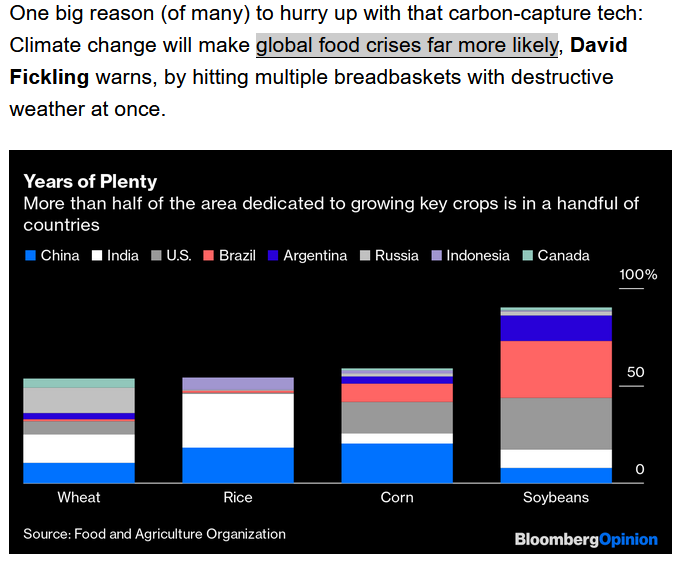 |
The prospects for geothermal energy are heating up, by James Pethokoukis, May 19, 2022
A recent Wall Street presentation by key startups has boosted my optimism about this emerging sector.
See fasterplease.substack.com
Chart of the day (century?): Price changes 1997 to 2017, by Mark J. Perry / Variations des prix réels
| 11
- 26/05/2022 Voir aei.org |
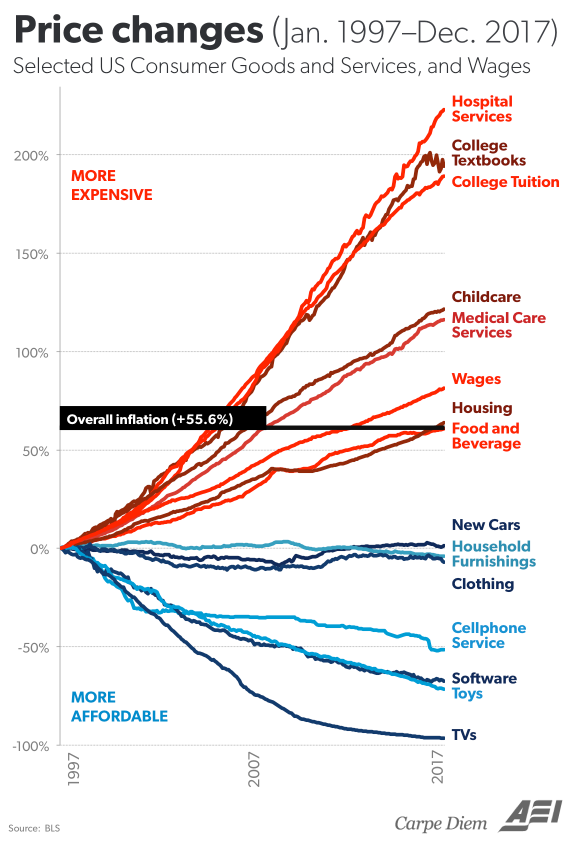 |
Record Fuel Price in USA
| 12 - 26/05/2022 | 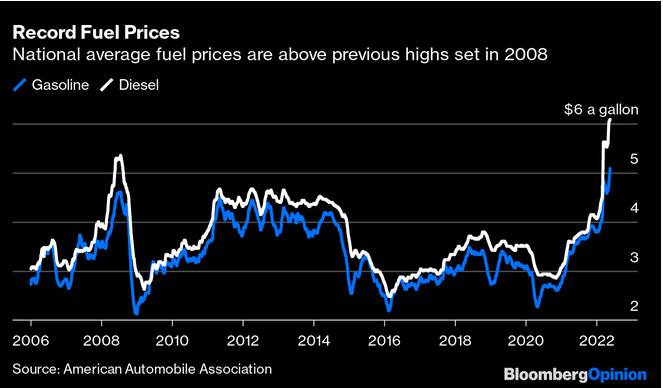 |
The NY Times reveals how Haiti became the poorest country in the Americas… France’s ransom
Haiti is one of the poorest countries in the world, and a new Times investigative series explores why. One stunning detail: France demanded reparations from Haitians it once enslaved. That debt hamstrung Haiti’s economy for decades — and kept it from building even basic social services, like sewage and electricity.
The series is based on more than a year of reporting, troves of centuries-old documents and an analysis of financial records. I spoke to my colleague Catherine Porter, one of the four reporters who led the project, about what they found.
.../...
After Haiti’s independence in 1804, France came back and demanded reparations for lost property — which turned out to include the enslaved humans. French officials encouraged the Haitian government to take out a loan from the French banks to pay.
It became known as a double debt: Haiti was in debt to former property owners — the colonists — and also to the bankers. Right from the get-go, Haiti was in an economic hole.
.../...
We haven’t even gotten into the U.S. occupation from 1915 to 1934 and Haiti’s dictator family, both of which further looted the country. It was one crisis after another inflicted on Haitians.
That’s true. A dictator, François Duvalier, came into power in 1957. Before that, the Haitian government had finally cleared most of its international debts. The World Bank had said that Haiti should rebuild. Instead, Duvalier and then his son put the country into increased misery.
As if that wasn’t enough, after Haiti’s president asked for reparations in 2003, France removed him from office, with U.S. help. Have France and the U.S. owned up to the damage?
France has had a slow softening. In 2015, its president, François Hollande, said that France had imposed a “ransom” on Haiti, and that he would pay it back. But very quickly, his aides corrected him, saying that he meant he was going to pay the moral debt back; he wasn’t talking about money.
…/…
See nytimes.com
Les Cornards, fête locale à Sauxillanges (2) / Horn bearers, a local festival in Sauxillanges
| 10 - 19/05/2022 |  |
Perspective: Distorting the narrative about bee health hurt, by Amanda Zaluckyj, The Farmer’s Daughter USA, May 20, 2022
Spring is the time of year when farms bloom into life as they emerge from winter hibernation (well, at least crop farms). Farmers take to their fields to plant the new crop, usually working long hours to get it all done. But they aren’t alone in those fields. As warmer weather returns, pollinators also emerge and get to their important work.
Everyone knows that bees are important for their pollinating activities. There are over 250,000 plant species that rely on bees to mix and spread nectar and pollen for reproductive purposes. The result is the wide array of foods that we enjoy, including some staples of our diets, like apples, melons, broccoli, and almonds. According to the Food and Drug Administration, the bees’ service accounts for $15 billion in added crop value.
.../...
These hysterics didn’t sway the Environmental Protection Agency in the U.S. The EPA already has a robust regulatory framework for pesticides, including neonicotinoids. Farmers are required to follow the EPA’s label instructions for safe use. In 2022, the EPA released changes to neonicotinoid labels to reduce the chances bees would come into contact with the insecticide. As one entomologist told me, bees are insects and can die from insecticide exposure. But that doesn’t mean neonics are causing an extinction-level event.
Unfortunately, individual states aren’t always as rational and measured as the EPA. A number of states — including New York, Vermont, Massachusetts, and New Jersey — have passed legislation reclassifying neonicotinoids as restricted-use pesticides. That means only licensed applicators can use them, increasing costs and potentially making them inaccessible for some farmers.
Unfortunately, neonicotinoids are just the latest example of how an activist message can lead to new laws, regulations, and bans. Farmers obviously care about pollinators and bee health — they’re vital to what we do. But somehow the narrative was distorted to make it seem as though our crop-protection tools are the problem. It’s a reminder that we need to be vocal about issues and confront disinformation.
See agdaily.com
Les Cornards, fête locale à Sauxillanges (3) / Horn bearers, a local festival in Sauxillanges
| 11 - 26/05/2022 |  |
Old Jewish Joke
A priest, a minister and a rabbi are playing golf.
It is the looooongest front nine holes they’ve ever played.
Maybe three hours long. They go into the pro shop to complain, and the pro says, “Oh, didn’t you know? The foursome ahead of you are all blind.”
The priest says, “Forgive me Father, for I know not whereof I speak.”
The minister says, “Forgive me Father, there but for the grace of God go I.”
And the rabbi says, “What? They couldn’t play at night?”
| |
The distribution of this efita newsletter is sponsored by vitisphere.com
Please, contribute to the content of your efita newsletter, and advertise your events, new publications, new products and new project in this newsletter. Without your support, it will not survive!
Contact: Guy WAKSMAN
E-mail: guy.waksman(a)laposte.net
To read this newsletter on our web site
See Efita
The archives of this newsletter
See Efita
Do not miss the Virus Jokes in English and French
About the EFITA mailing list
You can use the efita moderated list (> 15000 subscribers) to announce any event / product / web site / joke (!) related to IT in agriculture, environment, food industry and rural areas.
If you want to subscribe a friend, please fill in his form.
If you do not wish to receive our messages, please fill in the following form...



